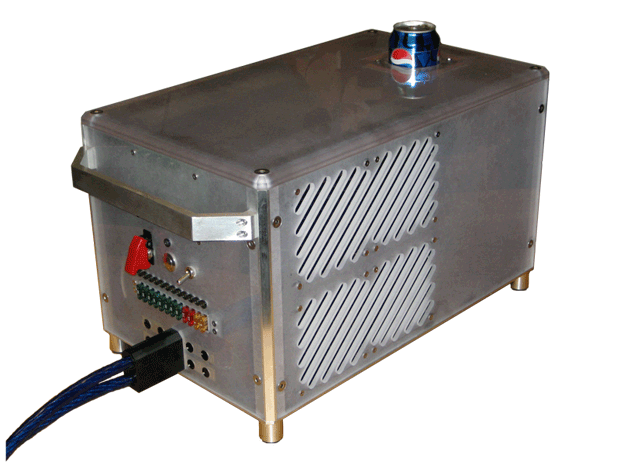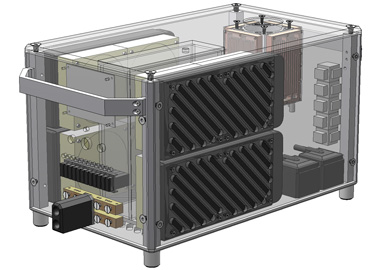 |
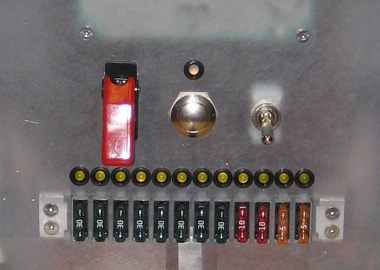 |
| As usual, everything was solid modeled first... |
The control panel features eight 30-amp relays and a missile switch. |
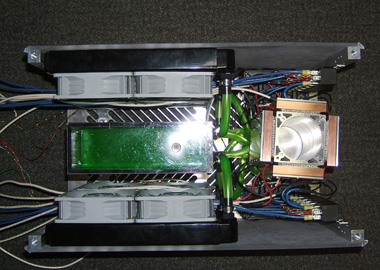 |
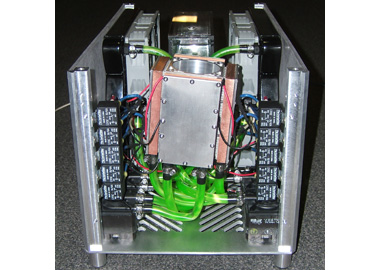 |
| A view from above with the side and top panel removed, showing the overall layout of the machine's components. |
Ten relays control the eight thermoelectric cooling modules, four fans, and four pumps. |
 |
 |
| All of the custom components. |
AbsolutZero's mechanical frame. |
 |
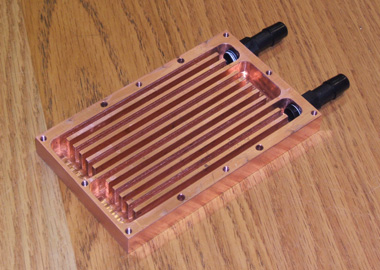 |
| The cooling chamber was constructed of five 1-inch-thick aluminum plates, waterjet cut and then remachined as a unit. |
A custom-machined copper liquid cooling block for the thermoelectric cooling modules. |
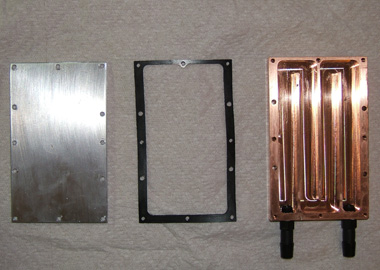 |
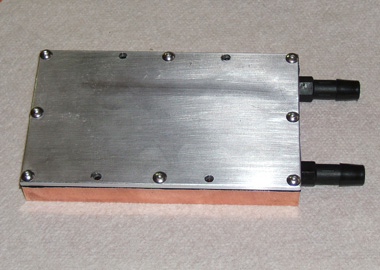 |
| Components of the cooling block assembly. |
An assembled cooling block. Four of these are used to extract heat from the eight thermoelectric cooling modules. |
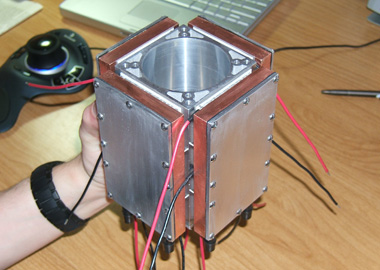 |
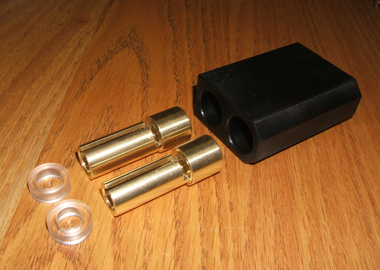 |
| The heart of AbsolutZero. Eight thermoelectric cooling modules are sandwiched between four cooling blocks and the cooling chamber. |
The power connector was designed to handle the machine's peak current draw of 240 amps. |
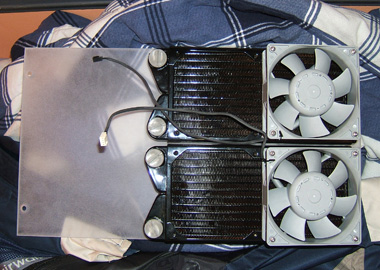 |
 |
| Radiators and fans mounted to a side panel. |
This aluminum handle was waterjet cut from 1-inch-thick plate, and then remachined. |
 |
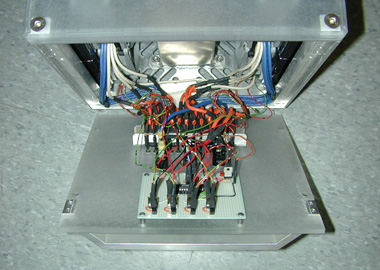 |
| Power distribution blocks. |
The onboard microcontroller and power distribution circuitry. |
